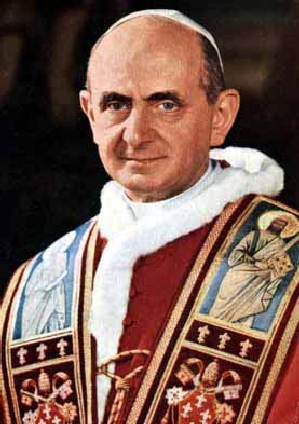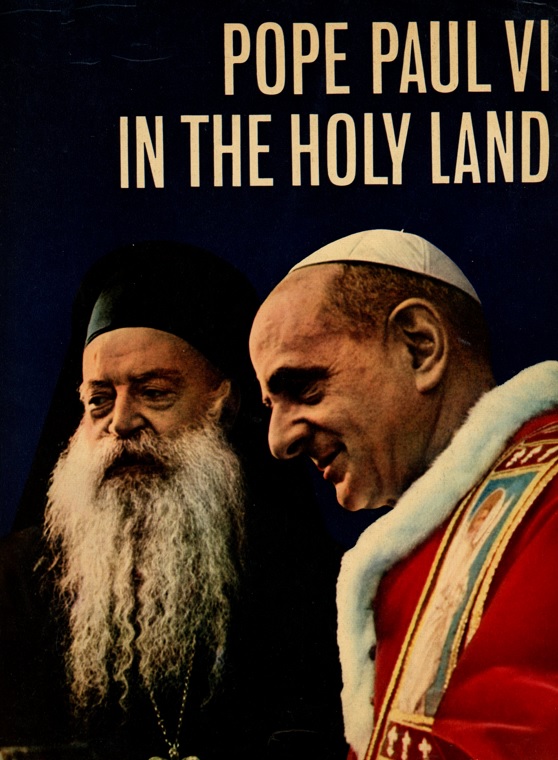| Titre : | Pope Paul VI in the Holy Land / auteur(s) : POPE PAUL VI - |
|---|
| Editeur : | Herder and Herder, New York |
|---|
| Année : | 1964 |
|---|
| Imprimeur/Fabricant : | Printed in West Germany |
|---|
| Description : | 23,5 x 30 cm, 198 pages, jaquette illustrée en couleurs |
|---|
| Collection : | |
|---|
| Notes : | |
|---|
| Autres auteurs : | |
|---|
| Sujets : | Pontifical visit in the Holy Land |
|---|
| ISBN : | |
|---|
| Lecture On-line : | non disponible |
|---|
Commentaire :In its effort to emerge more forcefully into the modern world the Church returned, paradoxically, in the first week of 1964, to the country of its origins, the Holy Land. The first papal pilgrimage in the history of Christianity also had profound significance for the future of Christian unity, tor it marked the first time in more than 500 years that an Eastern Orthodox ecumenical patriarch and a Roman Catholic pope had met face to face. Vatican isolation had been irrevocably ended; the first step in seeking to bridge the gap caused by the Great Schism had been undeniably taken. Ecumenicism and aggiornamento could hardly have been more singularly, and more meaningfully, combined.
The first portent of the historic pilgrimage was given only a few weeks before, when at the conclusion of the second session of the Council Paul VI announced to the startled Church fathers and to the world his intention to "honor our Lord Jesus Christ in the land sanctified by His birth."
On the morning of January 6, the pope boarded a DC-8 jet at Rome's airport where thousands of well-wishers had gathered to bid him tare-well. Several hours later Paul VI landed at Amman Airport in Jordan and was greeted by King Hussein. On the road from Jericho to the Damascus Gate were thousands of Arabs and Europeans, Muslims and Christians, Orthodox and Catholic, Copts, Armenians, Syrians and Maronites, nuns bearing palm branches, Arab Boy Scouts in uniform. Millions of television viewers, via Telstar, were also watching the papal motorcade.
The high point of the three day pilgrimage occurred the next day when Paul VI crossed over into Palestine tor the historic meeting with Athenagoras, Ecumenical Patriarch of Constantinople. Together they recited the Our Father and each gave the other his blessing. Upon his return from Palestine to the Eternal City the whole of Rome lined the streets to give the pope a tumultuous welcome. Every bell in the city rang out. A legendary trip had ended. |


